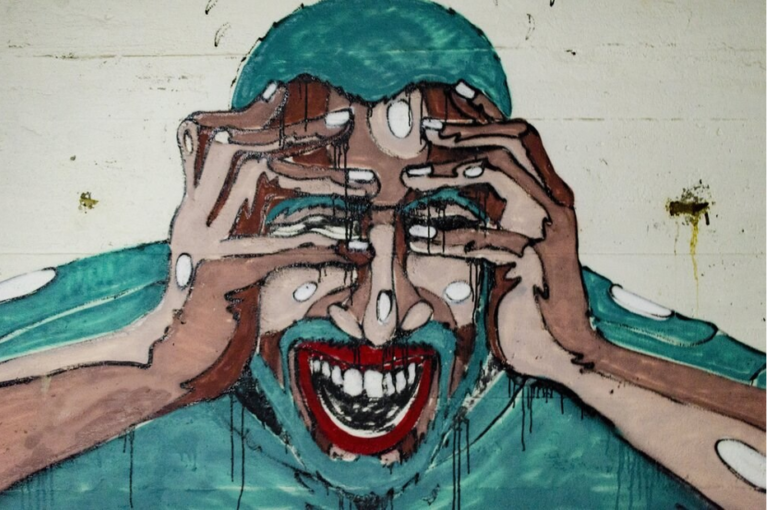ERLING ÓSKAR SKRIFAR: LÝÐHEILSAN Í ÞRIÐJA RÍKINU
Það var verið að senda mér mynd af heilsupassa sem hafði verið í notkun í Þriðja Ríkinu undir stjórn nasista. Ég fór að lesa mig til um þetta á netinu en rakst í staðinn á þessa áhugaverðu grein sem var birt árið 2004 í New England Journal of Medicine (NEJM), einu virtasta læknatímariti heims.
Ég hafði áður heyrt hve stóran þátt lýðheilsa hafi leikið í áróðri nasista, og hvernig honum var beitt til þess að sundra samfélaginu. Hóphyggja lék líka stóran þátt, en heilsa lýðsins skipti meira máli en heilsa einstaklingsins, og það mátti fórna heilsu einstaklinga fyrir lýðinn.
Hjá nasistunum byrjaði þetta með baráttu við sýkingar og aðra sjúkdóma, sem leiddist svo út í geldingu fólks með tiltekna erfðafræðilega sjúkdóma og svo „líknardrápi“ fólks með ólæknandi sjúkdóma. Alið var á ótta og andstyggð við tiltekna hópa fólks sem voru ásakaðir um að dreyfa sýklum. Síðar meir lagði þessi hugsunarháttur svo grunninn að útrýmingu heillra þjóðflokka sem taldir voru síðri en lýðurinn.
Hóphugsunin var að miklu leyti knúin áfram af læknum, vísindamönnum og öðrum sérfræðingum. Margir í heilbrigðissamfélaginu tóku vel í þessa þróun. Almenningur og stjórnvöld höfðu óvænt áhuga á þeirra sérsviði og þeir fengu að láta ljós sitt skína. Skyndilega fengu þeir ný starfstækifæri og mikla fjármagnsstyrki í alls konar rannsóknir. Á meðan treysti almenningur þeim í blindni, enda myndi hámenntað, velviljugt og viturt heilbrigðisstarfsfólk varla valda neinum skaða.
Nú er ég ekki endilega að halda því fram að ástandið í heiminum í dag sé sambærilegt ástandinu í Þriðja Ríkinu, en það eru óneitanlega einhverjar hliðstæður. Datt því í hug að deila þessu með ykkur.

In democratic societies, the needs of public health sometimes require citizens to make sacrifices for the greater good, but in Nazi Germany, national or public health — Volksgesundheit — took complete precedence over individual health care. Physicians and medically trained academics, many of whom were proponents of “racial hygiene,” or eugenics, legitimized and helped to implement Nazi policies aiming to “cleanse” German society of people viewed as biologic threats to the nation’s health. Racial-hygiene measures began with the mass sterilization of the “genetically diseased” and ended with the near-annihilation of European Jewry.
The concept of racial hygiene had deep roots in Germany. In the late 19th and early 20th centuries, growing numbers of medical and public health professionals decried Germany’s declining birth rate and the perceived biologic “degeneration” of the nation and proposed reforms to improve the quantity and quality of the population. Rapid industrialization and urbanization had created overcrowded cities, with attendant conditions of extensive poverty and crime; the spread of tuberculosis, syphilis, gonorrhea, and other contagious diseases; and expanding numbers of persons identified by psychiatrists as mentally ill or retarded, who required special care.

These changes coincided with a blossoming of medical research and the establishment of dozens of new institutes and laboratories. Breakthroughs in bacteriology and the emerging field of genetics — the publication of August Weismann’s theory of immutable germ-plasm in the 1890s and the “rediscovery” of Gregor Mendel’s laws of heredity in 1900 — seemed to promise biologic or medical solutions to Germany’s problems. Physicians and medical researchers began to view themselves as the guides to a healthy, moral, industrious Germany.
… Some physicians and biologists who supported eugenics had to accommodate themselves to Nazism’s rabid anti-Semitism. But in return for accepting the persecution of Jews as a source of biologic degeneration, many in the medical community welcomed the new emphasis on biology and heredity, increased research funding, and new career opportunities — including openings created hundreds of other medical and psychiatric specialists allowed the courts to present evidence supporting the state’s case for sterilization, such as family genealogies tracking purported inherited taints and intelligence tests containing educationbased questions.
… To build public support for this coercive program, posters, documentary films, and high-school biology textbooks (see Figure 2) argued the case for sterilization: “an easy surgical procedure, a humane means by which the nation can be protected from boundless misery.”

Það þarf að borga til að lesa greinina á NEJM
En hér er ókeypis útgáfa
Höfundur er Erling Óskar Kristjánsson
Um höfund

- Sigurlaug Ragnarsdóttir
- ✞༺(((( Ⓒilla ℜągnąℜṧ )))༻♚༺ BA Classical Art Historian || MA Culture & Media || Tourism & Sales Management || Web Design || Photo & Videographer for Tourism Magasins ༻
Síðustu færslur
 PROTECT THE CHILDREN23. nóvember, 2024BARNAMÁLARÁÐSTEFNAN 2024
PROTECT THE CHILDREN23. nóvember, 2024BARNAMÁLARÁÐSTEFNAN 2024 MANNRÉTTINDI19. nóvember, 2024MENNTASPJALL VALGERÐAR SNÆLAND JÓNSDÓTTUR
MANNRÉTTINDI19. nóvember, 2024MENNTASPJALL VALGERÐAR SNÆLAND JÓNSDÓTTUR Sigurlaug Ragnarsdóttir15. ágúst, 2024‘Really Chilling’: Five Countries to Test European Vaccination Card
Sigurlaug Ragnarsdóttir15. ágúst, 2024‘Really Chilling’: Five Countries to Test European Vaccination Card MANNRÉTTINDI9. ágúst, 2024Lög um borgaralega handtöku voru felld úr gildi árið 2008
MANNRÉTTINDI9. ágúst, 2024Lög um borgaralega handtöku voru felld úr gildi árið 2008










